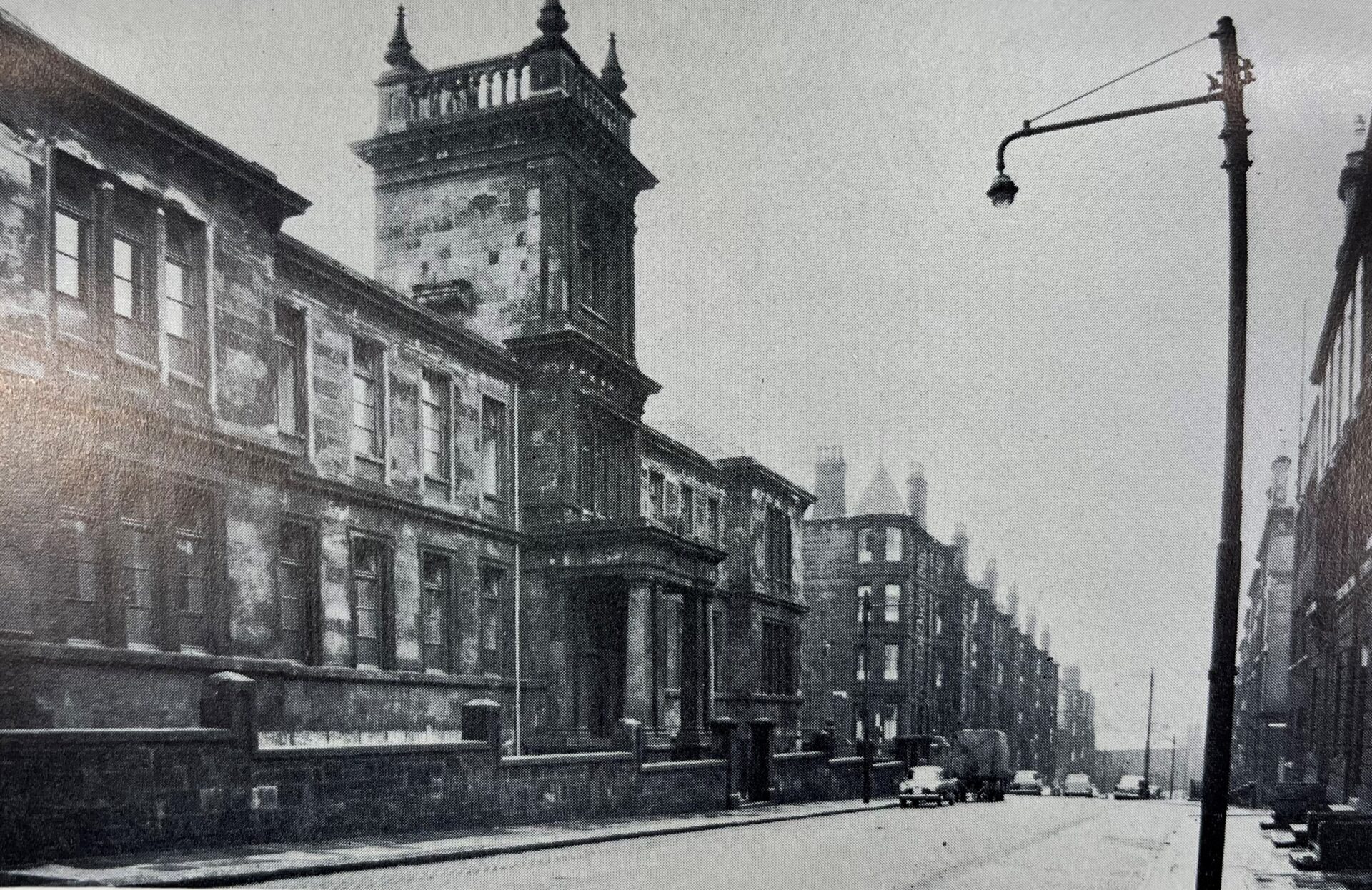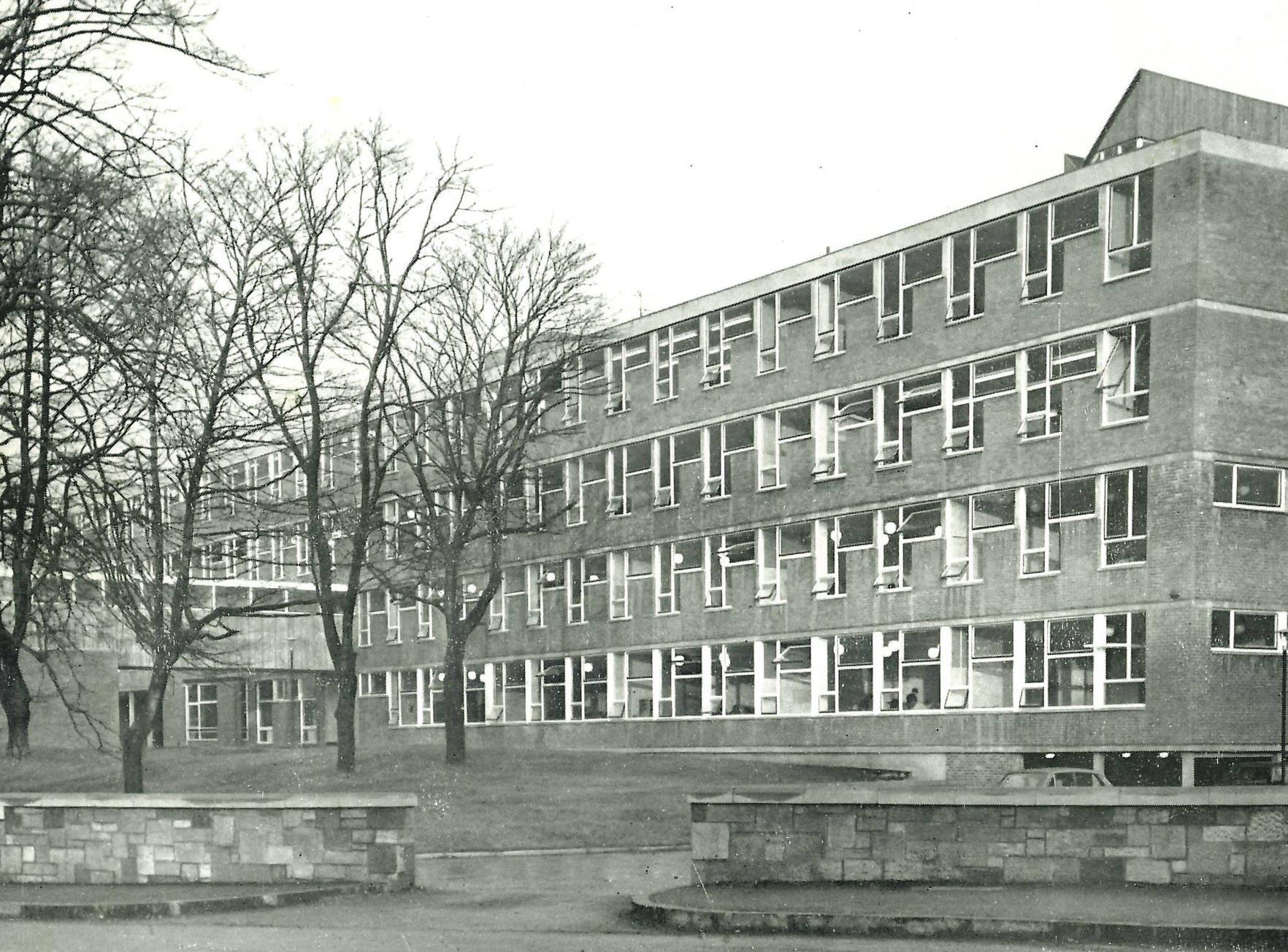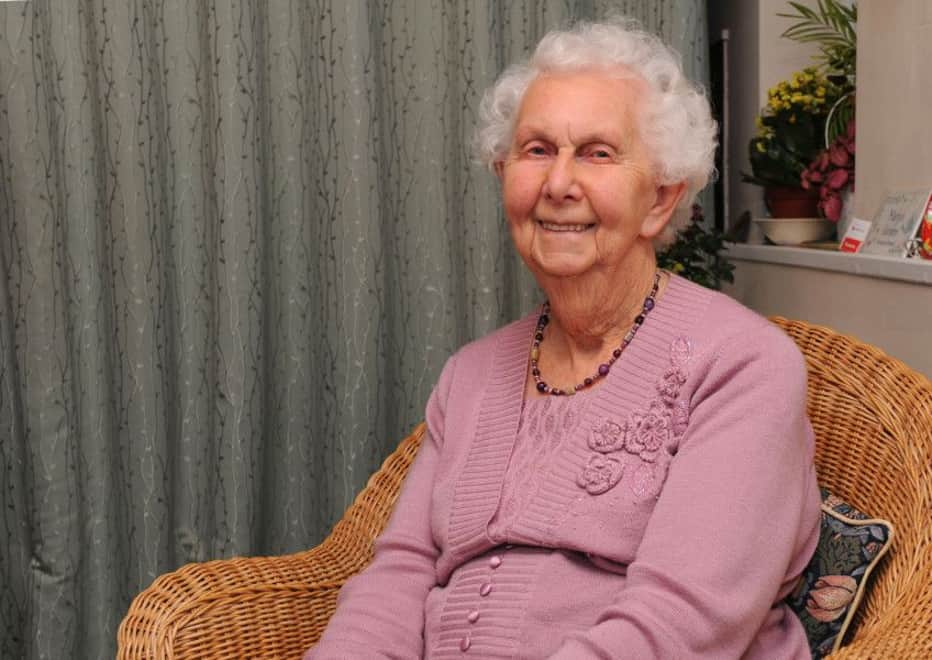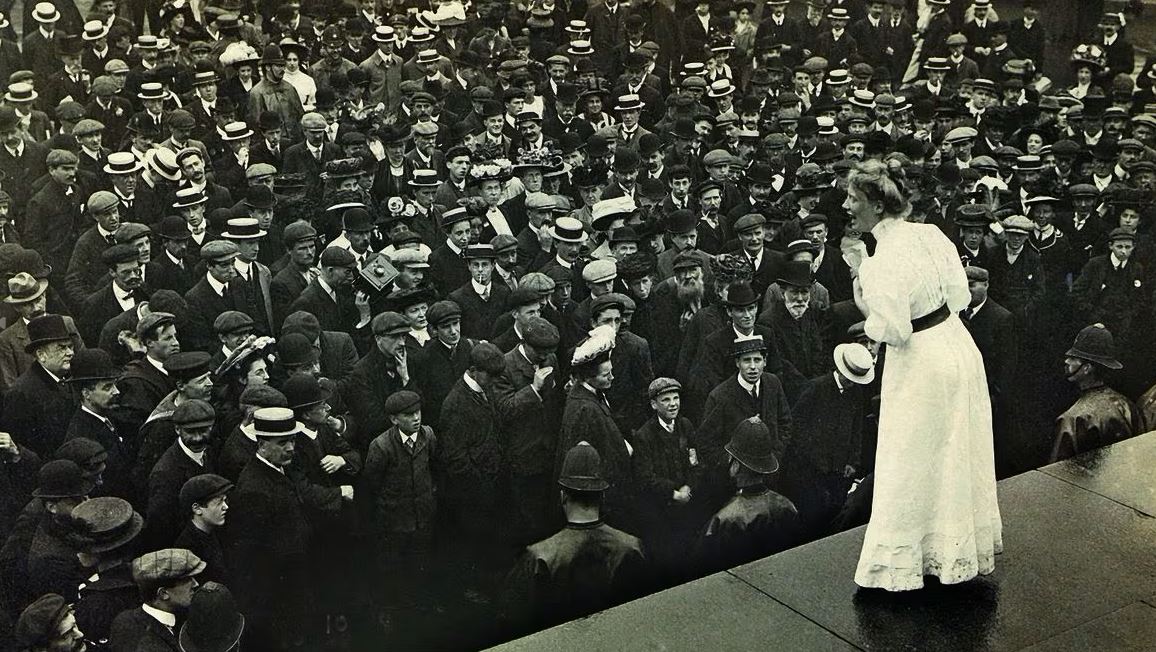HSOG History, Chapter 3: Shining a Spotlight on the Glasgow High School for Girls
The third instalment of #HSOGHistory takes readers on a journey back in time to 1894, the founding year of the Glasgow High School for Girls (GHSG), as we explore the fascinating history of our former girls’ school.
With International Women’s Day taking place on Friday 8th March, it is the perfect opportunity to share stories and celebrate the successes of some of our notable, historic female former pupils.
The history of the Glasgow High School for Girls
Prior to its transition to the GHSG in 1894, the School was formerly known as Garnethill Public School, a co-educational elementary and secondary school located on Buccleuch Street, to the north of Sauchiehall Street.
Under the successful leadership of then-Headmaster, Dr James Milligan, coupled with the continued achievements of female pupils at Garnethill, support for increased opportunities for women’s education gained traction. Having recognised that the provision of education in public schools was more restricted in terms of content and demand for girls than boys, the Glasgow School Board agreed to transform the upper department of Garnethill into the Glasgow High School for Girls, with the Junior Department following suit a year later in 1895.
In line with The High School of Glasgow, GHSG was granted ‘higher school status’ in 1899 and for Dr Milligan, an early champion of equal educational opportunities for girls, this was deemed a great success. Despite this transition resulting in the loss of grants, the School’s enrolment did not suffer. Continuing as Headmaster until his retirement in 1905, Dr Milligan advocated for, and implemented, an integrated curriculum with GHSG being the only Board school to teach its pupils both Greek and Latin. Additionally, Dr Milligan actively encouraged his pupils to undertake more science-based subjects.
In September 1905, following Dr Milligan’s retirement, Miss Alice Reid was unanimously elected as the first female Principal of GHSG. During her first year in post, she introduced a curriculum that was more in line with the boys’ school at Elmbank Street, as well as a Form System and extended lunch breaks.
Under the leadership of Miss Reid, the curriculum continued to flourish with junior pupils studying a myriad of subjects, including French, Experimental Geography and Physical Measurements (the latter were introduced at the higher stages). In the Senior School, girls undertook study in various subject areas such as Algebra, Botany, Physics and Commercial Subjects. By 1909, a Literary and Debating Club was established and the first edition of the School magazine was expertly produced in January 1920.

Miss Reid’s tenure as Principal also saw the new Kindergarten opened, as well as the playing fields at Kirklee. The latter was possible due to two successful fundraising fairs, the first in June 1922 which raised £1,060 (equivalent to c.£49,000 in today’s money) to purchase the land, and the second in June 1924 whose funds amounted to £1,279 (equivalent to c.£63,000 in today’s money) for the levelling, fencing and drainage of the land.
Following her retirement, Miss Reid was succeeded by Mrs Flora Tebb in 1926. The new Principal introduced significant innovations during her time leading GHSG. School Sports commenced in June 1928 at Old Anniesland, the School Song came into being and a new School Crest was developed by former pupil Miss Marguerite Benson (see top image), which featured four symbols – the lamp, the tree, Pegasus and Glasgow Cathedral. Together, these symbols represented ‘enlightenment through knowledge, culture and religion, to fit us for any enterprise’. Towards the end of World War II, a House system was established comprising four Houses – Atholl, Douglas, Lochiel and Montrose.
In 1939, World War II broke out which saw the withdrawal of many pupils from GHSG, with many of those remaining relocated to temporary homes in 1941 following the bombing raids on Clydeside which sadly claimed the lives of two GHSG pupils.
However, pupils contributed to the war effort in a variety of ways. From raising £250 for the Red Cross between 1942-43, to picking sphagnum moss for wound dressings, to knitting woollen comforts and picking berries to make the dye for the Forces’ uniforms, the contributions and sense of patriotism were well established across the school community.
On 16th June 1944, GHSG celebrated its 50th Anniversary with a special Commemoration Service in Glasgow Cathedral, followed by an evening reunion for members of the Old Girls’ Club. From here, a Jubilee Fund was set up with the goal of raising enough money to fund a University Bursary. The target of £1,050 was reached by June 1945 (equivalent to c. £37,000 in today’s money).
Two years after the conclusion of World War II, Mrs Tebb retired at the end of session 1946/47 after a successful 21 years in post. During her tenure, the School attempted to secure better accommodation following concerns that the buildings on Buccleuch Street were becoming unfit for purpose. By February 1936, plans for a new Girls’ High to be built at 42 Cleveden Road in Kelvindale had been agreed at sub-committee level. However, Mrs Tebb wasn’t in post to see the transition of the School to its new home, which officially opened on the 26th of August 1968.

The Principal which oversaw this was GHSG’s third Principal, Miss Barker, who held her position for 22 years. In that time, the School was no exception to the consequences brought about by the national shortage of teaching staff throughout 1960/61, which impacted day-to-day school life. A decision regarding the future of the Kindergarten was also made, resulting in it closing its doors at the end of the 1963/64 session.
By 1970, Miss Barker had retired and had been succeeded by Miss Helen Jamieson, the final Principal of GHSG before the Education Committee made the decision to abolish selective Grammar schools.
On 21st March 1973, GHSG became Cleveden Secondary with the last of the original High School girls finishing their education five years later. However, the new school badge retained a close resemblance to the Crest of GHSG.
Much of the source information included within this article was sourced from The Town School, a book written by former staff member, Brian Lockhart. Should you wish to read more about the history of the Glasgow High School for Girls, or indeed HSOG’s wider history, you can order a copy of the book here: www.hsogcommunity.co.uk/shop/.
Notable GHSG former pupils
We are extremely proud of the many achievements of our former pupils from GHSG. Here, we will focus in more detail on two women in particular: Mary Sherrard MBE and Mary Macarthur.
Mary Sherrard MBE (1923 – 2020)
Mary Sherrard (née Stiven) was born in Renfrew in 1923 and was educated at GHSG. As World War II broke out across Europe, Mary busied herself by becoming a teenage cub reporter for a local newspaper group in Scotland, which included the Rutherglen Reformer.
As more men were called up to the frontlines, Mary enthusiastically stepped in to take over their duties, reporting on a myriad of stories. It was here that she developed an unrivalled accuracy and close attention to detail, which would go on to serve her well in her role as a bombe operator and supervisor at Bletchley Park.
Initially, Mary volunteered to join the Women’s Royal Naval Service (Wrens), much to the displeasure of her parents. Her schoolgirl German, which further developed having spent time with her refugee lodger, signalled her suitability for a position at Bletchley where she found herself at the heart of the operation to decipher German codes.

From September 1942 Mary was posted at Gayhurst Manor, a Bletchley Park outstation, and travelled daily to Bletchley to work. For the next year, she worked on the hut’s bombe machines, massive devices developed by Alan Turing and improved by his fellow codebreaker Gordon Welchman, to decrypt the German’s Engima’s secret settings.
Many commentators attribute the work of code breakers to the shortening of World War II by up to two years. Given that the Nazis considered the Enigma an unbreakable code, it’s clear that the skills utilised by women such as Mary, which included vigilance, accuracy and speed, were vital to unlocking the encryption’s secret messages.
Towards the end of the war, Mary married John Sherrard in Glasgow in January 1945 before relocating to Dundee in the early 1950s. With their finances stretched, the Sherrard’s took in an eclectic array of lodgers, many of whom were from marginalised communities.
When the couple were moved to a local church in a housing scheme, Mary recognised the struggles of young mothers and became involved in establishing the Scottish Pre-School Playgroups Association, later becoming its President.
Some years later, when the couple relocated again to Galashiels, Mary was instrumental in the setting up of the Citizens’ Advice Bureaux out with larger cities. In 1978, she was made an MBE for her work.
She also served as President of the Church of Scotland’s Women’s Guild and played a significant role in transforming it into the Church of Scotland Guild where both men and women were welcome.
Additionally, Mary was incredibly proud of her BA from The Open University, particularly because she was one of the first Scottish students to graduate.
After the operations at Bletchley Park were declassified in the 1970s, Mary began to talk openly about her role as a code breaker. She enjoyed speaking to schools and community groups to share her experiences, particularly following the death of her husband in 1999.
On 24th December 2020, Mary sadly passed away at the age of 97.
The information about Mary Sherrard was sourced from her obituary in The Times, which you can read in full here.
Mary Macarthur (1880 – 1921)
Mary Macarthur was born in Glasgow on 13th August 1880. Upon completing her education at GHSG, she became a book-keeper in the family business after its relocation to Ayr. Her infamous trade union career began in 1901 when she joined the National Amalgamated Union of Shop Assistants, Warehousemen and Clerks, and her success rapidly continued from there.
At the age of 23, Mary had travelled to London where she became Secretary of the Women’s Trade Union League, an organisation which advocated for trade unionism amongst women whilst campaigning for legislative change to improve their working conditions.
The National Anti-Sweating League, of which Mary was a leading member, campaigned for a minimum wage in order to eradicate the sweated trades. This particular industry was well-known for its very long hours, extremely poor pay and difficult working conditions, which disproportionately affected women.
Mary also founded the National Federation of Women Workers in 1906, whose aims were to unite and strengthen small female unions, to organise women in some of the worst paid industries in the country and to give members the confidence to become and remain strong trade unionists. It was undoubtedly a bold and ambitious experiment.

Her inspirational leadership continued with the 1910 women chain makers’ dispute in the Black Country which gave women’s trade unionism international attention. Her writing, organising and campaigning drew financial support from many individuals and groups, from Bishops to football crowds.
Despite initial reservations, Mary worked with the coalition government, employers and unions throughout World War I to ensure that women stepped in to fill the jobs once occupied by the soldiers fighting on the frontlines. She worked hard to avoid women being used to undercut men’s pay and advocated for them to receive equal pay for work of an equal value.
Mary also made history when she became one of the first women to stand as a parliamentary candidate when she was selected by Labour in Stourbridge in the 1918 general election. Sadly, she was unsuccessful and, after developing cancer in 1920, passed away shortly thereafter on January 1st 1921 at the age of just 40.
She has undoubtedly left behind a lasting legacy that helped pave the way for conversations and campaigns for equal rights for women in the workplace.
To read more about Mary’s life and work, we would recommend visiting the Trades Union Congress’ website here.
The next instalment of #HSOGHistory will be available in April.

